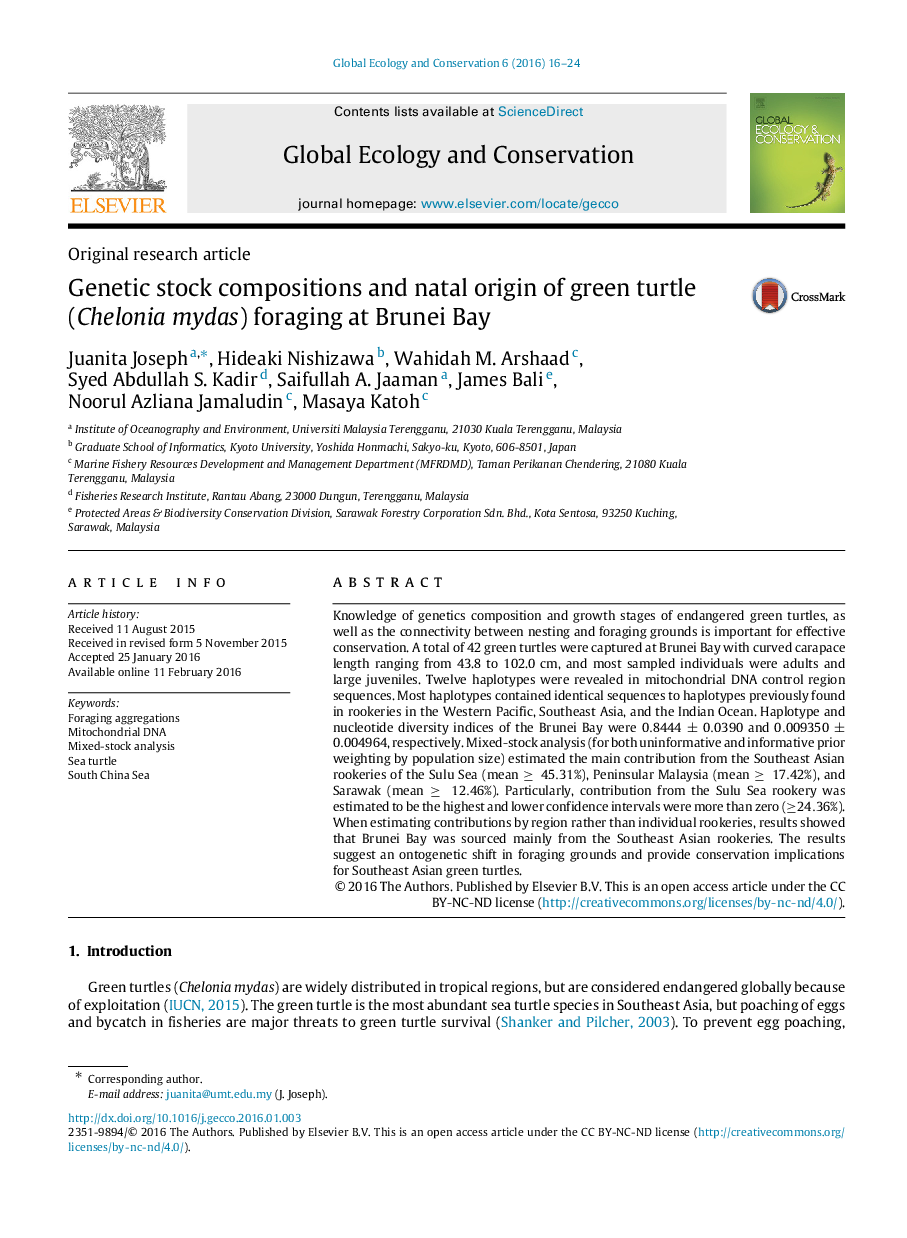| کد مقاله | کد نشریه | سال انتشار | مقاله انگلیسی | نسخه تمام متن |
|---|---|---|---|---|
| 4379631 | 1617661 | 2016 | 9 صفحه PDF | دانلود رایگان |
Knowledge of genetics composition and growth stages of endangered green turtles, as well as the connectivity between nesting and foraging grounds is important for effective conservation. A total of 42 green turtles were captured at Brunei Bay with curved carapace length ranging from 43.8 to 102.0 cm, and most sampled individuals were adults and large juveniles. Twelve haplotypes were revealed in mitochondrial DNA control region sequences. Most haplotypes contained identical sequences to haplotypes previously found in rookeries in the Western Pacific, Southeast Asia, and the Indian Ocean. Haplotype and nucleotide diversity indices of the Brunei Bay were 0.8444±0.03900.8444±0.0390 and 0.009350±0.0049640.009350±0.004964, respectively. Mixed-stock analysis (for both uninformative and informative prior weighting by population size) estimated the main contribution from the Southeast Asian rookeries of the Sulu Sea (mean ≥45.31%≥45.31%), Peninsular Malaysia (mean ≥17.42%≥17.42%), and Sarawak (mean ≥12.46%≥12.46%). Particularly, contribution from the Sulu Sea rookery was estimated to be the highest and lower confidence intervals were more than zero (≥24.36%≥24.36%). When estimating contributions by region rather than individual rookeries, results showed that Brunei Bay was sourced mainly from the Southeast Asian rookeries. The results suggest an ontogenetic shift in foraging grounds and provide conservation implications for Southeast Asian green turtles.
Journal: Global Ecology and Conservation - Volume 6, April 2016, Pages 16–24
